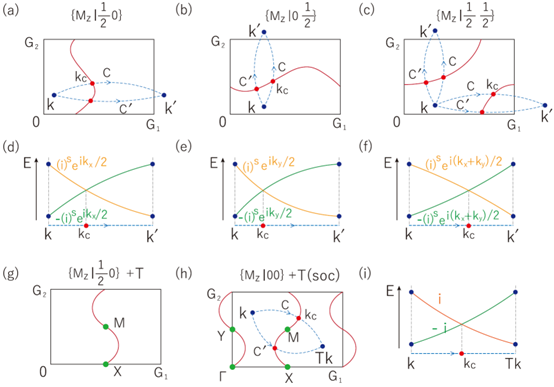Recently, the research team led by Researcher Li Xiaoping from the School of Physical Science and Technology at our university made new advancements in the theoretical prediction of topological phases. They published their research titled "Essentially degenerate hidden nodal lines in two-dimensional magnetic layer groups" in the prestigious physics journal Physical Review B. (Paper link: https://link.aps.org/doi/10.1103/PhysRevB.110.235163). Researcher Li Xiaoping is the first author and corresponding author of the paper, with Professor Yao Yugui from Beijing Institute of Technology as the co-corresponding author. Inner Mongolia University is the primary institution for the paper.
The article introduces a new type of inherently degenerate nodal line in solids. Unlike traditional inherently degenerate nodal lines, this new nodal line deviates from high-symmetry paths and is distributed on high-symmetry planes. As a result, it is highly concealed, and the authors have named it the "hidden inherently degenerate nodal line (HENL)." The small group of HENL does not have a high-dimensional irreducible representation, making it impossible to analyze using traditional band degeneracy theory. The origin of this phenomenon requires consideration of the evolution of the eigenvalues of symmetry operations. Specifically, after undergoing a periodic evolution of an integer multiple of a reciprocal lattice vector, the eigenvalue of the glide mirror operation develops a π phase. This π phase alters the sign of the eigenvalue, leading to a crossing of energy bands and the formation of the HENL. The appearance of HENL requires only a glide mirror operation, which allows it to exist widely in both magnetic and non-magnetic systems. The study systematically examined 528 magnetic layer groups and found that 122 magnetic layer groups can host hidden nodal line states. Additionally, the paper explores the unique properties of spin HENLs. The results show that after considering spin-orbit coupling (SOC), the system's spin texture exhibits "persistent spin texture," which plays an important role in long-lifetime spin-related transport.


